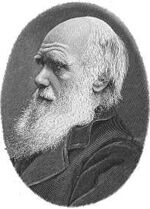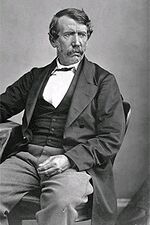Royal Geographical Society
What ho! I'm Arthur Ballamhurst Fortesque-Smythe, 15th Earl of Ravenspur-Upon-Humber, but you can call be 'Buggo'. I'm the President of the Royal Geographical Society, don'tcherknow. During a recent expedition into the Internet, two of our members (Lord Bunting and the Very Rev. Dr. Pifflington, DD) discovered that Uncyclopedia has no article on this, the most venerable of Geographical societies. It was therefore decided that it would be a bit of a wheeze if I wrote one, what. So, without further adieu; without further hue and cry; without even further let or hindrance I present to you "The Royal Geographical Society Article."
Now let us all stand, sing God Save the Queen, and then begin.
History[edit]
The Royal Geographical Society began many, many yahrs ago, in 1830 to be precise. The slave trade had been abolished in the British Empire, and His Most Gracious Majesty King William IV foresaw the total abolition of slavery. In a fit of nostalgia, he founded the RGS to go have a poke around Africa, looking for likely looking blacks. We were then to send back reports, so the old fellow could dream of "what might have been".
The geographers of the day rose to the challenge, and we were soon sendin' off hundreds of expeditions to bloody Ongo Bongo land or what-have-you. Once there, they geographers were unable to enslave the fuzzy-wuzzies, and so taught them cricket and proclaimed their village to be the source of the Nile. These were the Golden Days of the RGS, what.
Relationships with other Geographical Foundations[edit]
Now, I do want to make it clear that there was geography before this. Oh, yes. Why some believe that geography goes back to the 1820s or even earlier, if you can credit such a thing. There was a Society for Promoting the Discovery of the Inner Parts of Africa, a Society for Promoting the Avoidance of the Inner Parts of Africa, a Society for the Abolition of Africa, the Society for Exploring those Countries Lacking Laws for Suppressing Prostitution and the Society for Sailing to Antarctica and Dying.
Naturally, they all had to go.
Within a few months of the founding of the RGS, all of these organisations found themselves being visited by burly geographers who'd say things like "Wot a luverly pile of maps! Be a pity someone messed with the pseudoconical projection on these, nah, wouldn't it, guv? I mean I'd 'ate to see all of these azimuthal readings catch fire, nah, wouldn't you?"
It wasn't long before all the other geographers started playing ball. If any didn't, they'd awaken of a morning to find the severed head of an endangered okapi in their bed. That'll put you off your kippers of a morning, believe you me.
Famous Expeditions[edit]
The Voyage of the Beagle[edit]
In the 1830s, the RGS sponsored the circumnavigation of the globe by sloop Beagle commanded by the heroic Captain Fitzroy. Fitzroy was accompanied by a young scientist named Charles Darwin. Suffering from illness when the Beagle docked in Charleston, SC, Darwin decided to travel across country and rejoin the vessel in San Fransisco.
As he traveled across the American South, Midwest and Southwest, Darwin came to an incredible discovery: he hated these people. With a passion. Therefore, in best RGS tradition, he devoted the rest of his life to pissing off the people of rural USA as much as humanly possible. He therefore wrote a book called American Yokels can Bite Me. When this failed to have the desired effect, he wrote The Origin of Species by Means of Natural Selection.
That this accomplished Darwin's goal cannot be doubted. Even today, a hundred and fifty years later, there are still parts of Mississipi where you can see locals muttering "ain't true" or "then why are there monkeys?".
The Source of the Nile[edit]
Captain Sir Richard Francis Burton KCMG FRGS OMFG LOL was a famous explorer and orientalist, best known for translating into English the unexpurgated version of the 1001 Nights, the Karma Sutra andDebbie Duz Djibuti. In the 1850s, he teamed up with John Hanning Speke RTFM to discover the true source of the Nile.
For many decades, explorers had searched across Africa in the hope of finding the Nile's point of origin, but to no avail. Thus, Burton and Speke came to the inevitable conclusion: the source of the Nile is not in Africa at all, but in the south of France.
Taking a a RGS grant amounting to over a million pounds in today's money, the intrepid pair valiantly searched every inch of the Riviera in search of the Nile. For a while, they thought they'd narrowed down its location to somewhere in Monte Carlo, and wired home for an additional ten thousand pounds, in the form of casino chips for bartering with the natives.
All this was to no avail. Burton became feverish and ill from a poorly cellared Chateau Lafite while Speke was severely injured when one of the natives struck him in the shin with a croquet mallet. The expedition returned to England a hungover failure, and the source of the Nile remains a mystery to this day.
Dr. Livingston[edit]
As you might presume, David Livingston was a Scottish doctor and, a missionary. He traveled to Africa, presumably on a ship. Once there, it has been presumed that he began his work as a doctor and, one might presume, a missionary. Some presume that he was also a oboe player, but this piece of presumption has long been presumed disproven.
After many years in the interior, Livingstone was presumed missing, presumably because few of his dispatches ever made it back to Britain. Many of his colleagues presumed him dead, although this was somewhat presumptuous as he still lived.
In 1871, Henry Morton Stanley who had been sent to find him, presumably by the New York Herald newspaper, found Livingstone on the shores of Lake Tanganyika, greeting him with the words "Dr. Livingstone, I expect?"
Scott of the Antarctic[edit]
In 1910, Captain Robert Falcon Scott, CVO RN TLA set sail for the Antarctic. His mission: to discover whether the Antarctic was snowy just around the edges, or all the way through.
Scott landed with his co-expeditioneers at the little Antarctic town of Bwgali, on the banks of the M'po River. Trading beads and trinkets with the natives, he gathered a train of bearers and made for the inland. Time was of the essence as a rival explorer, the Norwegian Roald Amundsen, was also making his way to the Pole.
As winter turned to ultrawinter, the expedition slowed by the Nilgiri Hills, when many of the bearers came down with dengue fever. Amundsen, who had cleverly decided to use not African bearers but hardy Tibetan pack yeti made much better time. When Scott reached the South Pole in 1942, he found the Norwegian flag had already been planted; along with French, Spanish, Russian and Mexican flags. Also a secret Nazi base had been built to communicate with the subterranean humanoids of the Earth's core. And Superman's Fortress of Solitude. And some other stuff.
Disgusted, Scott retraced his steps, hoping to get home to cry to his mummy. On the way, Captain Oates said something memorable and then died. All in all, it was the worst Christmas ever.
Conclusion[edit]
Well, I'm afraid that's about all the time we have, old bean. That's the glorious story of a hundred and eighty years of explorin'. We keep at it, though, even though we're now down to just re-explorin' that have already been explored. Just last week, I did some explorin' in Amsterdam, while m'colleague the Duke of Basingstoke did a little exploring of his own in Manila, the filthy bugger.
What does the future hold for the Royal Geographical Society? Well, the future holds gin, and the future holds tonic, and if God is merciful, the future also holds lemon wedges and ice.
Good night.


